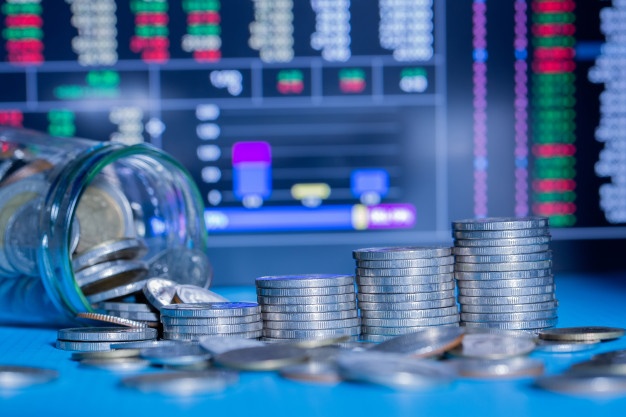Market review:
Last week, the new material sector fell 4.99%, while the Shanghai and Shenzhen 300 index fell 0.99% in the same period. The new material sector lagged behind the market by 4 percentage points. In terms of individual stocks, 10 of the 101 stocks in the sector rose, and 21 outperformed the market. The top five gainers were Xinjiang Joinworld Co.Ltd(600888) (4.84%), Tangshan Sanyou Chemical Industries Co.Ltd(600409) (4.04%), Shennan Circuits Co.Ltd(002916) (2.85%), Ningxia Orient Tantalum Industry Co.Ltd(000962) (2.49%), Shengyi Technology Co.Ltd(600183) (2.07%); The top five declines were Shandong Shida Shenghua Chemical Group Company Limite(603026) (- 19.55%), Shenzhen Danbond Technology Co.Ltd(002618) (- 18.75%), Zhejiang Yongtai Technology Co .Ltd(002326) (- 16.89%), Lushan Xincai (- 16.78%) and Lecron Industrial Development Group Co.Ltd(300343) (- 14.31%).
Industry hot spots:
New energy materials: Recently, the Ministry of industry and information technology released the economic operation of the automobile industry in March 2022. From January to March, the production and sales of Shanxi Guoxin Energy Corporation Limited(600617) automobiles in China maintained a rapid growth, with production and sales of 1293000 and 1257000 respectively, an increase of 1.4 times year-on-year, and the market penetration rate was about 19.3%. In addition, according to the data of China automotive power battery industry innovation alliance, the output of China Shipbuilding Industry Group Power Co.Ltd(600482) battery in the first quarter totaled 100.6gwh, with a year-on-year increase of 206.9%; The cumulative sales volume reached 65.0gwh, with a year-on-year increase of 172.6%. Among them, the output of ternary battery was 38.0gwh, with a year-on-year increase of 113.7%; The sales volume was 27.5gwh, with a year-on-year increase of 116.8%; The output of lithium iron phosphate battery was 62.4gwh, with a year-on-year increase of 317.2%; The sales volume was 37.4gwh, with a year-on-year increase of 235.5%. Supported by the strong demand for downstream new energy vehicles and power batteries and the high price of cost side raw materials, the average price of upstream materials of new energy remained at a high level in the first quarter. According to the data of Baichuan Yingfu, as of April 17, the average market price of lithium iron phosphate was 163000 yuan / ton, an increase of 52.34% over the beginning of the year and 229.29% year-on-year; The average price of lithium grade PVDF was about 490000 yuan / ton, an increase of 10.11% over the beginning of the year and 308.33% year-on-year; The average price of lithium hexafluorophosphate was about 430000 yuan / ton, down 21.82% from the beginning of the year and up 95.45% year-on-year. The continuous high-level operation of upstream materials has led to several new energy battery and automobile manufacturers issuing price increase letters this year. At present, the downstream has strong resistance to the high price of materials. In addition, the recent outbreaks in Shanghai, Jiangsu, Zhejiang, Fujian and other regions have been repeated. The start-up of China's downstream enterprises is seriously limited, and the export is also affected by logistics, epidemic and other factors. The demand side of short-term new energy materials is slightly weak. If the epidemic continues to lead to the low start-up of downstream enterprises, it may have a negative impact on the performance of new energy material manufacturers in the second quarter. Considering that the subsequent new capacity of new energy materials will be put into operation one after another, and the supply-demand structure will gradually return to a balanced state, it is expected that the price of new energy materials will gradually return to a rational level. In the long run, we are optimistic about the downstream volume of new energy materials, and we suggest paying attention to relevant targets.
Display materials: according to the data released by the Korea Display Industry Association recently, in 2021, Chinese display panel manufacturers accounted for 41.5% of the global market share, while Korean display panels accounted for 33.2% of the global market share. China successfully surpassed South Korea and jumped to the top of the list. However, in terms of sub categories, at present, South Korea is still in an absolute leading position in the field of OLED panels with a share of 82.8%, while China's mainstream display panel manufacturers are continuously increasing investment and production expansion in the field of OLED. Referring to the development history of LCD panels, China's share in the field of OLED panels will gradually increase in the future, so as to accelerate the domestic substitution process of upstream display materials, Long term favorable display material related leading enterprises.
Risk factors: downstream demand is less than expected; The domestic substitution process of core materials is less than expected; The construction progress of capacity under construction is less than expected; The price of raw materials fluctuates greatly; The epidemic situation in many places has repeatedly affected the risk of enterprise commencement.
